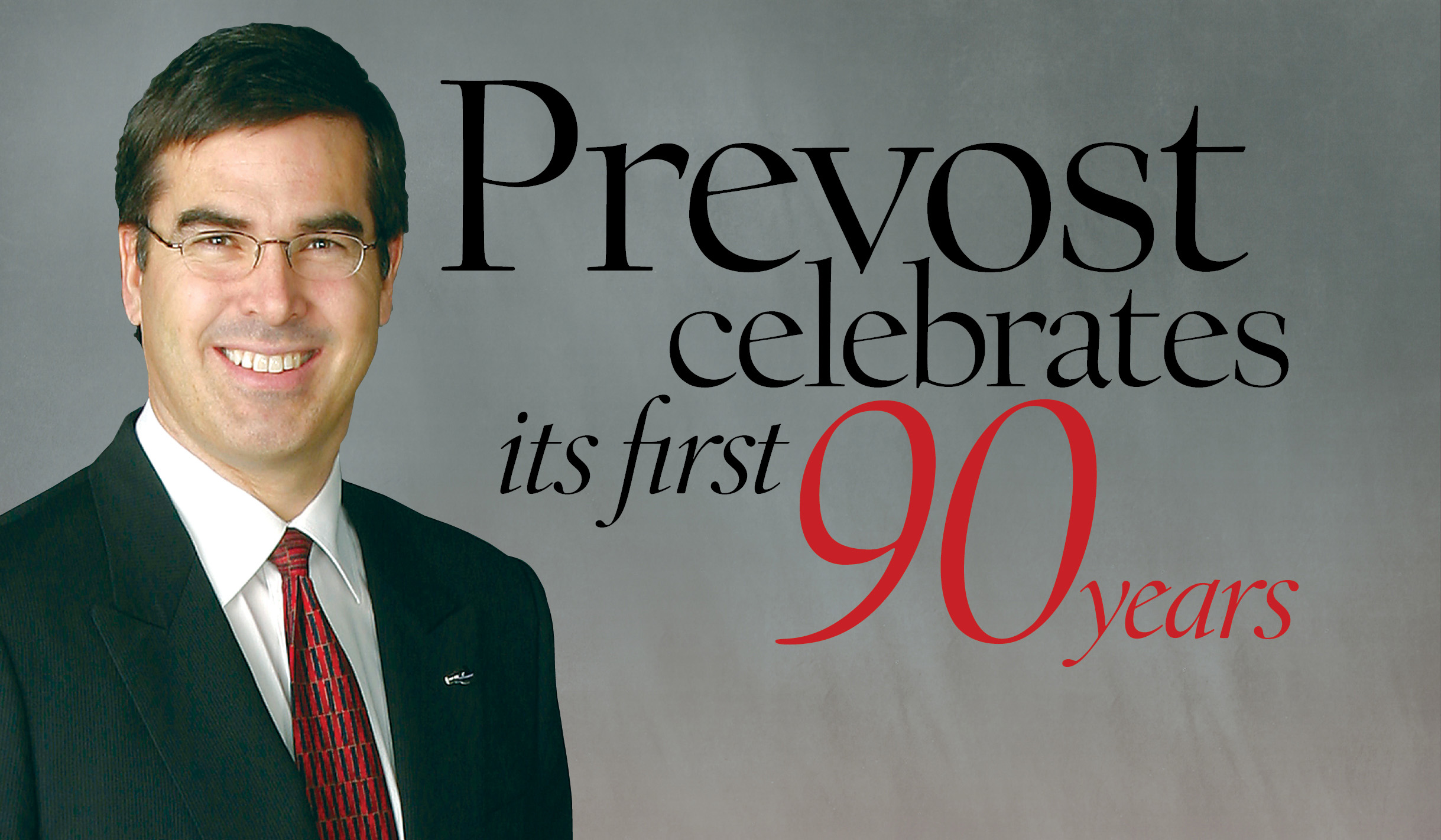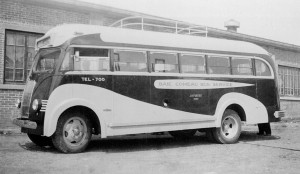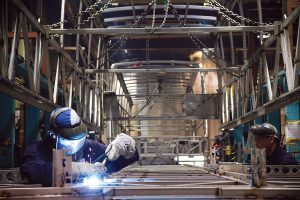
Innovations and industry firsts span nearly a century from Eugene Prevost to Volvo; wooden church pews to luxurious coaches in the digital age.
Prevost Inc., Sainte-Claire, QC, Canada, tells its entire story through its detailed 90-year timeline:
Prevost begins

1924 — Eugene Prevost, a cabinet maker specializing in the production of church pews and school furniture, receives a commission to build his first wooden coach body and mount it on a new REO truck chassis.
1937 — Prevost builds its first bus manufacturing facility.

1945 — Prevost bus design evolves from all-wood construction when Eugene Prevost introduces the first all metal body over an all-metal skeleton. From 1945 to 1957, he gradually phases out cabinet work to concentrate on manufacturing highway motorcoaches.
1947 — The company name changes to Les Ateliers Prevost — Prevost Workshops — and expands to 40,000 square feet to house metal and woodworking shops, die-casting and plating facilities and a foundry.
1951 — Prevost receives 100 orders for highway buses from the Canadian government, 66 for the Department of National Defense.
1957 — Industrialist Paul Normand acquires the company and renames it Prevost Car Inc. The silver-sided Le Normand with a diesel engine and pneumatic suspension is the first model under the new ownership.
The ‘60s are huge
1961 — The 25-foot Travelair, a gas- or diesel-powered passenger coach, is available for airport shuttles and short intercity routes.
1962 — The 40-foot Panoramique intercity parlor coach features broad side windows and Prevost’s improved air-ride.
1967 — The Prevost Champion is the first North American coach with an integral structure. It features three axles, split level and air conditioning. Somerset Bus Company, Somerset, NJ is the first American operator to purchase a new Prevost coach.
Prevost’s first American sales and service facilities open in Lyndhurst, NJ, Los Angeles, CA.
1968 — The Prevost Prestige comes out with the curved roof-wrapping side windows that have become the hallmark of the Prevost Le Mirage XL silhouette.
1969 — Two American businessmen, Thomas B. Harbison and William G. Campbell, form a partnership with André Normand, president of Prevost Car Inc., that lasts until 1996 and become the company’s sole owners.
1970 — The first Champion conversion shell rolls off the assembly line as bus tourism grows in Canada and the United States.
1973 — Prevost introduces the Prestige model; implements a 35,000 square-feet plant expansion.
1976 — Prevost unveils its hallmark Le Mirage, an eye-catching, futuristic passenger coach featuring roof-wrapping side windows, a rust-protected integrated frame, fluted all stainless-steel skirting, and less riveting than other coaches of the time. The Le Mirage is offered to converters without interior finishing for motorhomes and corporate coaches.
1978 — Harbison and Campbell, both longtime motorhome owners, contribute to the engineering of the first Le Mirage conversion shell introduced at the Family Motor Coach Association (FMCA) meeting.
1980 — Prevost builds its 100,000 square-feet plant with conveyor system and in-house research and development (R&D) in Sainte-Claire, QB, Canada.
1984 — Prevost introduces 102-inch wide Marathon XL and Mirage XL for passenger coaches and conversion coaches.
Enter the H-Series
1985 — The company expands twice more to introduce the 60-foot articulated Prevost H5-60 bus for 72 passengers — the first in its H-Series.
1989 —Prevost launches a new line of premium touring coaches: the H3-40, H3-41 and H3-45, as well as the H3-40 touring coach and H3-40 bus shells for high-end conversion.
1990 — Le Mirage XL extends to a 45-foot model.
1992 — Prevost introduces the long wheelbase 45-foot XL-45 for traveling entertainers.
1993 — Prevost launches three H-Series models, the H3-41 and H3-45 premium touring coaches and the H3-45 VIP bus shell for high-end conversion.
Volvo and Henlys Group acquire Prevost

1995 — Volvo Group of Sweden and Henlys Group of United Kingdom acquire joint ownership of Prevost; expands production, parts and service facilities.
1997 — Prevost befomes the first North American bus manufacturer to earn the ISO 9001 certification.
The company introduces frameless windows that allow panoramic viewing for tour and charter passengers.
1998 — Company concern leads to its ISO 14001 certification for environmental management systems related to manufacturing and design operations.
2002 — The H-Series coaches get a facelift.
2003 — Prevost introduces an exclusive, interchangeable wheelchair lift.
2004 — Volvo gains sole ownership of Prevost
2005 — Prevost sets a new standard with its space-saving second-generation multiplex system.
2006 — Prevost launches the X3-45 with the longest wheelbase in the industry and the largest overall under-floor surface area for storage.
2009 — Prevost launches the Volvo 9700 in the North American market.
2009 — The next redesign for the H-Series shows clean, sleek lines.
2010 — Prevost announces it will manufacture all vehicles with the Volvo D13 Engine.
2011 — Prevost manufactures its 15,000th vehicle; introduces Aware Adaptive Cruise Braking; gains industry market share lead for first time; introduces X3-45 Commuter Coach; as well as its first mobile app, the Prevost Service Locator.
2012 — Mobile app technology leads to an entire suite of digital tools.
2013 — Prevost becomes Official Luxury Motorcoach of NASCAR. The company introduces PRIME (Power Recovery by Intelligent Management of Energy). Recent expansion brings the Prevost Service Network to 10 service centers, four mobile service trucks and more than 150 Prevost-trained service providers.


Hello!
I am working on an exhibition project on Prevost and I would like to use one of the pictures appearing on your website. Can I do it, and if so, how do I cite you?
Thank you